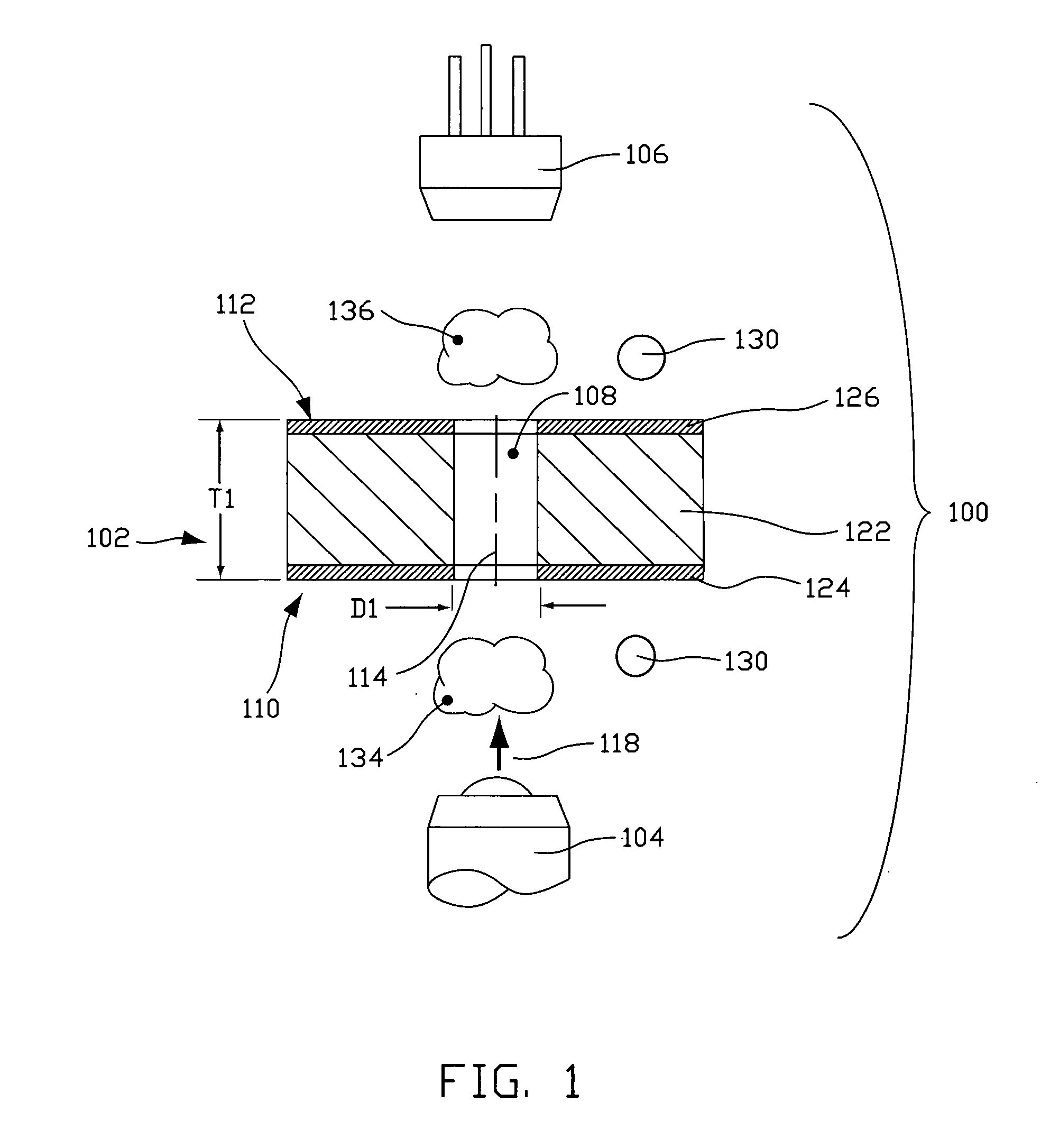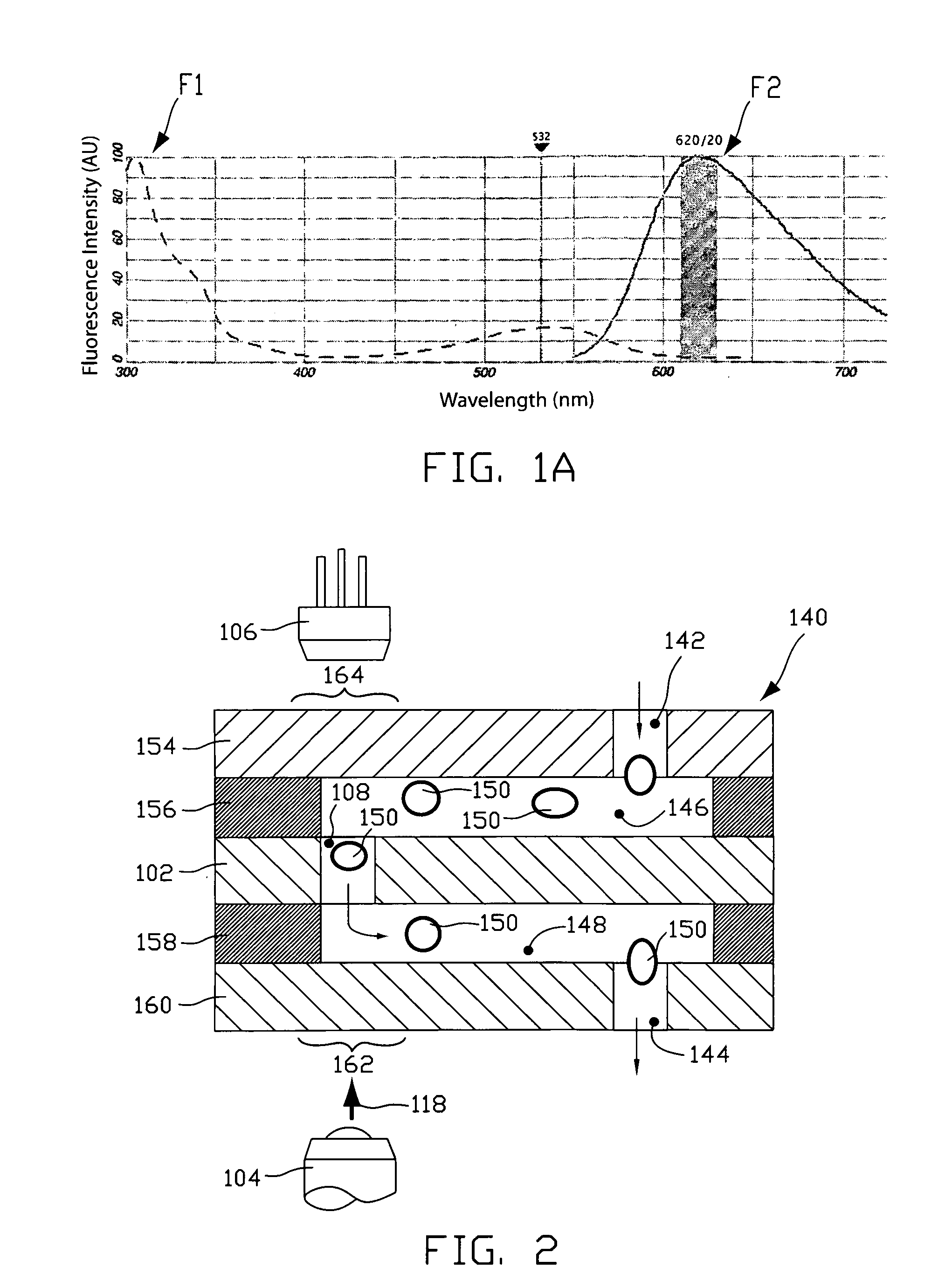Fluorescence-based pipette instrument
a fluorescence-based pipette and instrument technology, applied in instruments, material analysis using wave/particle radiation, laboratory glassware, etc., can solve the problem of time and resource consumption of cell counting under microscope using this approach
- Summary
- Abstract
- Description
- Claims
- Application Information
AI Technical Summary
Benefits of technology
Problems solved by technology
Method used
Image
Examples
embodiment 100
[0037]A schematic illustrating a generalized operable arrangement of structure employed in certain embodiments of the invention is indicated generally at 100 in FIG. 1. As illustrated, embodiment 100 includes an opaque member, generally indicated at 102, disposed between a radiation source 104 and a radiation detector 106. Sometimes, opaque member 102 may be made reference to as an interrogation layer, because layer 102 is associated with an interrogation zone. At least one orifice 108 is disposed in opaque member 102 to provide a flow path between a first side, generally indicated at 110, and a second side, generally indicated at 112. Orifice 108 may be characterized as having a through-axis 114 along which fluid may flow between the first and second sides 110 and 112 of opaque member 102, respectively.
[0038]The thickness, T1, of an opaque member and characteristic size, D1, of an orifice are typically sized in agreement with a size of a particle of interest to promote single-file ...
embodiment 140
[0049]The multilayer plumbing arrangement 140 illustrated in FIGS. 2 and 3 includes a top cap layer 154, a top channel layer 156, an opaque member 102, a bottom channel layer 158, and a bottom cap layer 160. Such layers can be stamped, e.g. die cut, or manufactured by using a laser or water jet, or other machining technique, such as micro machining, etching, and the like. In a currently preferred embodiment 140 that is used to interrogate blood cells, certain of the various layers are typically made from thin polymer films, which are then bonded together to form the multilayer assembly. Desirably, the thickness of at least the channel layers 156, 158 are on the order of the characteristic size of particles of interest to promote single-file travel of particles through an interrogation zone. A workable thickness of such layers in currently preferred devices used to interrogate blood cells typically ranges between about 10 microns and about 300 microns.
[0050]In any case, at least a po...
PUM
| Property | Measurement | Unit |
|---|---|---|
| volumes | aaaaa | aaaaa |
| thickness | aaaaa | aaaaa |
| thickness | aaaaa | aaaaa |
Abstract
Description
Claims
Application Information
 Login to View More
Login to View More - R&D
- Intellectual Property
- Life Sciences
- Materials
- Tech Scout
- Unparalleled Data Quality
- Higher Quality Content
- 60% Fewer Hallucinations
Browse by: Latest US Patents, China's latest patents, Technical Efficacy Thesaurus, Application Domain, Technology Topic, Popular Technical Reports.
© 2025 PatSnap. All rights reserved.Legal|Privacy policy|Modern Slavery Act Transparency Statement|Sitemap|About US| Contact US: help@patsnap.com



